Description and cultivation of roses "Flamentants"
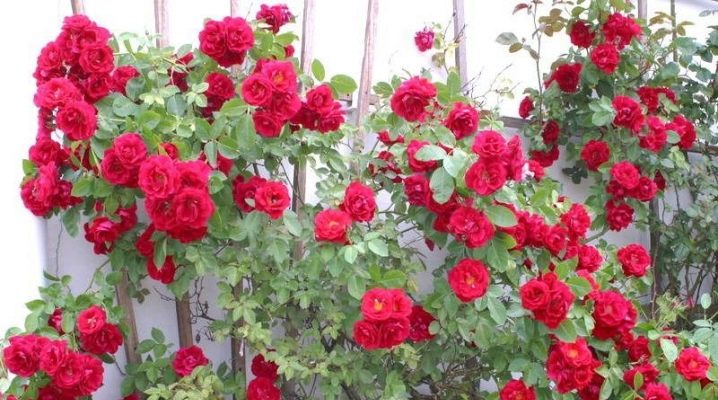
Rose of the "Flamentants" variety did not exist in nature until 1952. This type of plant was artificially bred through the efforts of leading German breeders. Translated from German, the word "flmentant" means a fiery dance.
Description
Despite the fact that the most popular name for this variety is "Flamenants", gardeners and folk plant lovers "gave" this flower and several other names. The rose is called Korflata, Flame Dance, Flaming Dance, Vlammenspe. A climbing landscape rose is a decoration of any site. The flowers of the plant, which usually grow singly or in groups of up to 4 in one shoot, have a pronounced red color and a pleasant, but not sugary, fragrant aroma.
In the center of each flower there are yellow stamens, and these elements are quite densely located.
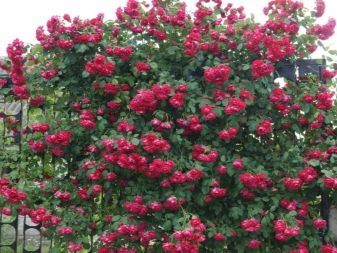
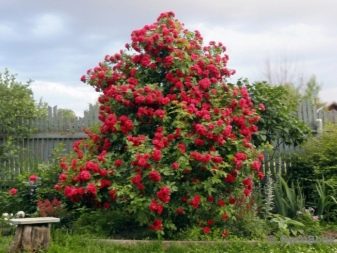
It should be noted that in the midst of flowering, the buds may tilt slightly - this "behavior" of the plant is due to the large number of petals on each flower (on average there are 25 of them), respectively, the rather large weight of the flowering part of the shrub. The maximum flower size is 120 millimeters, but most often there are specimens 60–80 millimeters in size. As for the leaves of the plant, it should be said that they are painted in a deep dark green color, and their surface has a strong sheen.
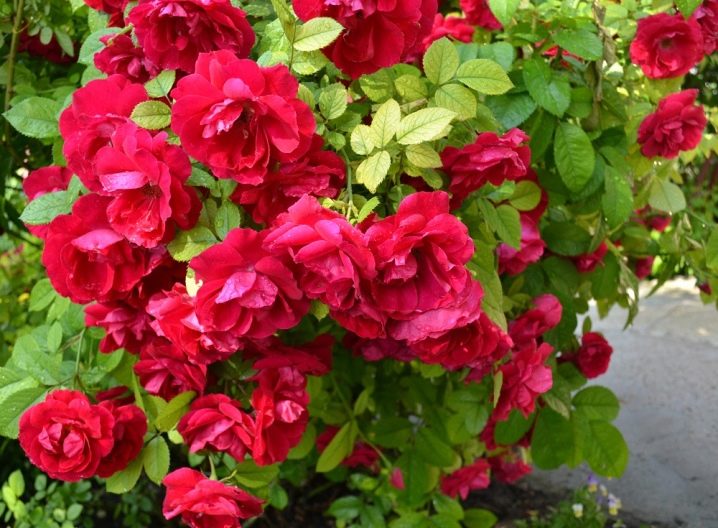
This type of rose shrub is considered to be quite resistant. It does not lend itself well to the influences of various diseases, as well as the negative effects of pests. In addition, "Flamentants" can be grown in climatically unfavorable northern regions (the rose is resistant not only to low air temperatures, but also to frequent and intense precipitation, as well as to winds). Due to these characteristics, the bush can grow quite significantly - up to 250 centimeters in height and up to 200 centimeters in width. Individual specimens have been recorded that have grown to 500 centimeters in height.

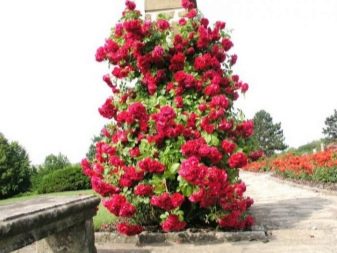
Like all other types of roses, thorny thorns are located on the branches of the plant, therefore, in the process of caring for the plant, you should be careful and careful. As for the flowering process, it is important to note that "Flamentant" blooms only once a year, but rather intensively. So, the flowering period is considered to be summer - June and July, and new young buds appear on last year's shoots. If you want your rose bush to bloom again, then you should promptly remove the buds that have already bloomed. Thus, you give the opportunity to appear in their place for new flowers.
At the end of flowering, the rose produces large decorative fruits, therefore, even after the end of the flowering period, the shrub continues to be a decoration of the garden.
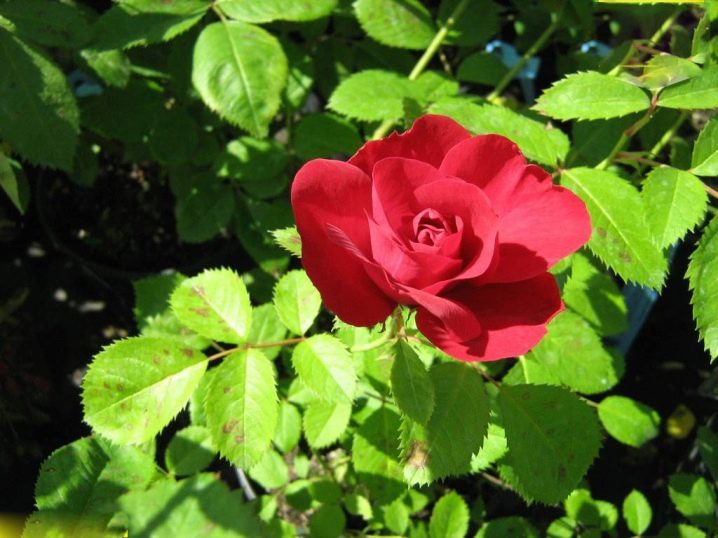
Landing
The process of planting a climbing rose should be approached with special care and thoroughness, because the process of its further development will depend on how correctly and efficiently you plant the plant. Gardeners note that the process of planting the Flamentant rose can be carried out 2 times a year: in autumn or spring. So, if you decide to plant a bush in the fall, then it is important to have time to do this while the air temperature is more or less warm (until early October).This must be taken into account without fail, otherwise the root system will not have time to take root before the onset of frost, and the harsh climatic conditions will simply destroy it.

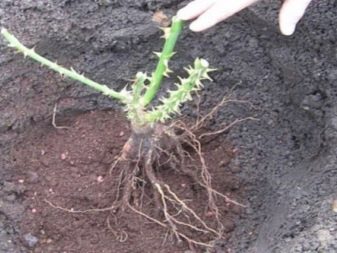
In this regard, it is the spring planting that is considered the most favorable. - if you choose this method, then in the summer you will be able to "reap the fruits" of your labors and admire the colorful bush growing in your front garden. However, even when planting in the spring, a number of points must be taken into account. First of all, you need to wait for the arrival of heat (you should not plant roses in early March). It is necessary to wait a certain period so that the ground in which you will plant the rose has time to warm up (the lowest possible temperature of the soil suitable for planting, experts consider the temperature to be + 10– + 12 degrees Celsius).
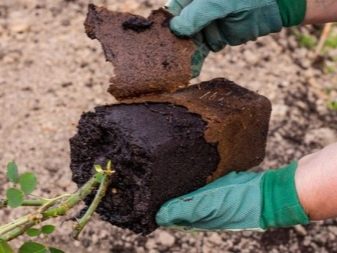
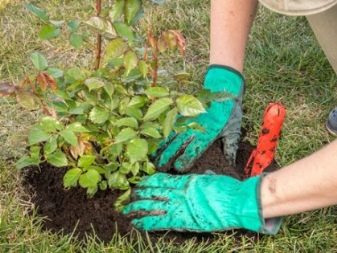
Having figured out the landing time, you need to move on to the process of choosing a specific place. So, the area that will be suitable for landing "Flamenants" should be intensely and continuously (during the day) illuminated by sunlight. If these conditions are met, then your rose in the process will release a large number of healthy and large flowers. The second indicator to which you should pay close attention is the protection from the wind.
This pink variety "does not like" drafts, so the wind will negatively affect the process of plant development.
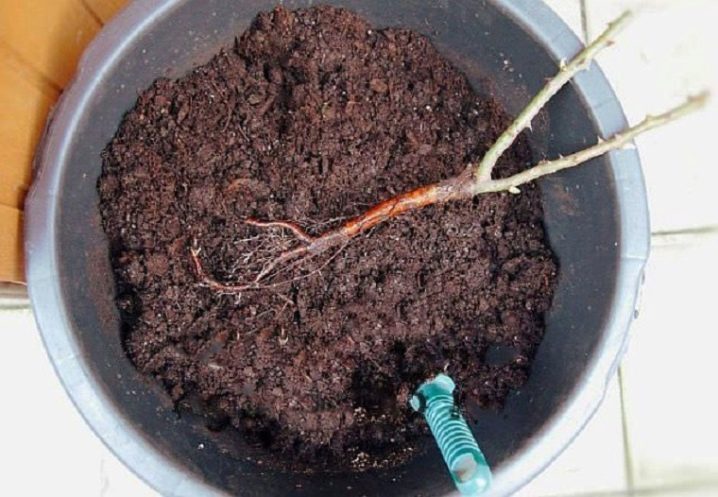
One of the most important factors when planting is undoubtedly soil quality. So, it is recommended to plant a shrub in sandy loam soil, which contains humus (if necessary, you can add it yourself). In such conditions, not only the flowers themselves, but also the stems of the rose will actively develop. In addition, it is important to pay attention to the amount of moisture (in particular - pay attention to the process of moisture accumulation during precipitation). If necessary, a system for draining excess liquid should be organized, otherwise the plant will not be able to develop properly and will die (the root system will simply rot).
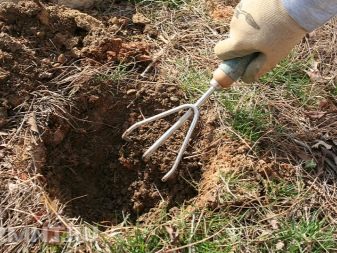

It is worth considering the detailed instructions for the planting process.
- Even before starting the planting process, it is necessary to cut off the lashes and parts of the roots of the seedlings. It is recommended to leave cuttings, the size of which will not exceed 30 centimeters. In addition, it is necessary to process the sections: for the roots, ash is used for this purpose, and for the shoots, take a garden pitch.
- Now the treated seedlings should be placed in water for several hours. By doing this manipulation, you will significantly speed up the engraftment process.
- Now it's time to start the actual landing. For this you need to prepare the ground. So, the area on which it is planned to plant a rose should be dug up without fail (the depth of the digging should be similar to the length of the shovel bayonet).
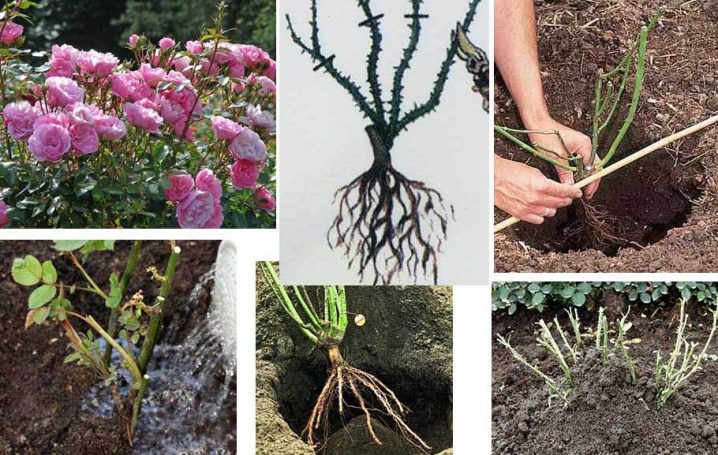
- When organizing holes for seedlings, it must be borne in mind that there should be at least 100 centimeters of free space between them. The recommended hole dimensions are 50 by 50 centimeters.
- The wells should be watered with water, and then, after the water is absorbed, a drainage coating should be made at their bottom (its thickness is at least 25 centimeters). Pebbles or crushed bricks can be used as drainage material.
- The next layer after the drainage should be a mixture of clay substrate and manure (in a ratio of 2 to 1). It is also recommended to add several tablets of phosphorobacterin to the mixture.
- Now a stalk, processed and seasoned in water, should be placed in the hole, which must be sprinkled on top with soil and tamped.
In the end, do not forget to water the newly planted plants, and you can also add peat or sawdust.
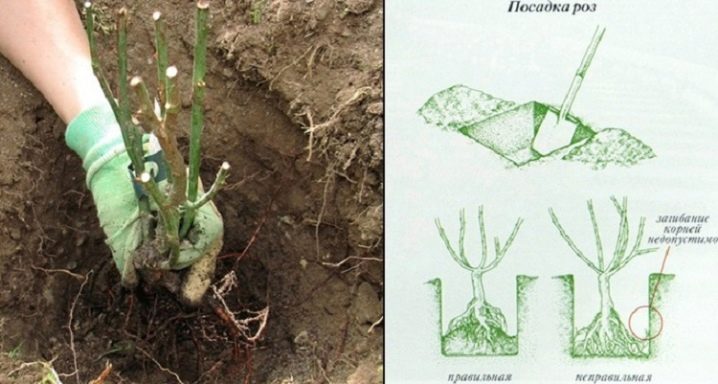
Care
In order to maintain the vital activity of the planted bush, it must be properly looked after. So, the leaving process includes several mandatory stages.
Watering
During a drought period, the plant is recommended to be watered at least 2 times a week, and 1 bush needs 20 liters of water. It is also important to spray the bushes once (usually in the morning or in the evening). At the time when the bud formation process takes place, the rose needs to be watered once every 10 days.
Top dressing
Most often "Flamement" is fertilized with such substances as:
- nitrogen;
- phosphorus;
- potassium;
- manure;
- wood ash;
- complex fertilizing "Agricola";
- organic fertilizer "Flower".

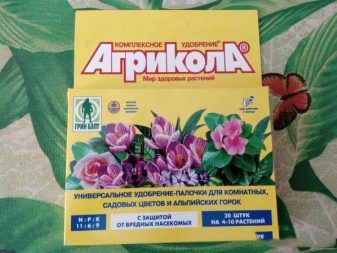
Loosening and weed control
This procedure must be carried out fairly regularly. It provides high aeration and also helps to increase the amount of nutrients in the root system.
Pruning
Pruning is done in order to ensure the density, the formation of a beautiful crown, as well as the rejuvenation of the plant. So, shoots and branches affected by diseases and pests are initially cut off. In addition, old shoots should be removed, which will allow new ones to develop.

Support
For support, you should choose strong, but at the same time, rather compact and small-sized materials. So, you can use arches, pergolas, stands, tripods, nets. These structures can be made from the following materials:
- wood;
- stone;
- plastic;
- metal.
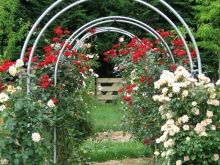
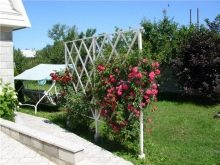

Shelter for the winter
In order for the plant not to die during the winter frost, it must be covered. Usually for this, the rose bush is covered with spruce branches, film or other coverings.
Reviews
Reviews of gardeners who planted the Flamement rose on their plots are quite positive. Plant lovers report that the rose is quite resistant to negative external influences: pests, diseases and temperature jumps. In addition, an adult shrub makes an indelible impression during the flowering period. The only drawback is that the rose may not bloom every year.
Use in landscape design
Being a climbing plant, the Flamentanz rose can become a real decoration of your summer cottage or private estate. A shrub can be planted near the wall, thereby hiding an unkempt or outdated building. With its help, you can decorate the gazebo in an original way, braiding the plant along the supporting columns of the structure. And also the plant can be "put" on a fence or mesh fence, or planted in a flower bed.
In any case, a bright rose will bring a festive touch to your front garden.
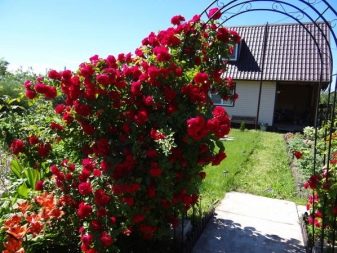
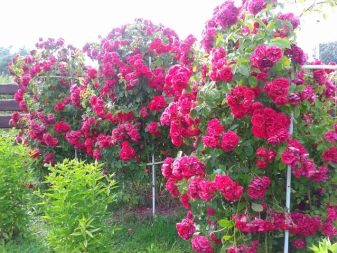
How to care for a climbing rose, see the video below.

































































































The comment was sent successfully.